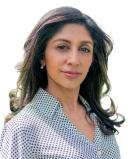Burnout
Understanding Burnout Among South Asian American Physicians
Exploring the intersection of expectation and success for South Asians.
Updated August 10, 2024 Reviewed by Gary Drevitch
Key points
- For first-generation South Asians, balancing personal passions with parental approval can be taxing.
- In choosing a career, physician burnout is not something generally considered and may even ignored.
- Few are fully prepared for the grueling process of the medical field.
“My parents keep bugging me to do premed, but I’ve been exploring other options. They aren’t going to be happy. I’m so confused! I’m not sure I even want to be a doctor.” —Anjana, 20.
In South Asian households, there is often pressure for kids to choose medicine as a career, as it is seen to offer a high level of financial stability and status. It is no secret that SA parents brim with pride in sharing that their child is off to medical school. There is almost a “halo effect” that follows these youth as they are not only lauded for being good role models, but also for bringing a “good name” to their parents. However, the path to a medical career can be paved with unforeseen challenges that are often obscured by the merits of such a valued position.
Having initially pursued premed before shifting to psychology, I relate to Anjana’s uncertainty about medicine being her true calling. I remember following the premed track as my parents nudged me toward it, especially with close friends already in accelerated programs. For first-generation South Asians, balancing personal passions with parental approval can be taxing. Some may choose medicine out of a sense of duty to please their parents or prove themselves in a community where comparison breeds competition.
For others, pursuing medicine may span from a deep interest in caring for patients or following a generational legacy. “I saw myself as a physician because of my exposure to my uncle as a cardiologist and my father as a pharmacist," recalls Jay Bhatt, a primary care physician in Chicago. “I was fortunate to have family and SA friends in the field and could see firsthand the impact and opportunity.”
Regardless of the reasons, the common sentiment is that no one is fully prepared for the grueling process of the medical field. For SAs who may relentlessly pursue success, the demands of long shifts, on-call nights, endless paperwork, inefficient systems, lack of support, etc., can be a rude awakening, zapping away energy and enthusiasm. To make matters harder, many have to balance familial responsibilities and expectations. “My parents don’t understand the pressures of med school. They always make me feel bad that I can't always do stuff with the family and I have to study. It's a lot to balance!” sahred exasperated student Raeshma.
Despite the growing number of South Asian physicians in the U.S., there can still be a sense of underrepresentation and the need to prove oneself in a predominantly non-South Asian environment. This can lead to added pressure to perform and feelings of isolation. “As a South Asian woman, I do think there is a lot of pressure for perfection in all dimensions of your life so the personal pressure you put on yourself to succeed is also contributing to the toxicity,” shares Vineet Arora, Dean for Medical Education at the University of Chicago Pritzker School of Medicine. Given the need to prove themselves, SA’s may continue to take on more shifts and work longer hours—and ultimately burn themselves out.
Burnout is a serious issue that affects many professionals, but it can be particularly challenging for SAs in the medical field. Bhatt asserts, “Culturally, as South Asians we are taught to not ask for help and are expected to be strong, and push through mental health challenges, and the cognitive load that accumulates.”
Burnout
“I was just going through the motions at work. I looked normal, but there was a detachment. I was seeing patients as cases almost like watching a video game versus being in reality.” —Tina Shah, physician and national expert in workforce wellbeing and public policy.
Burnout is caused by chronic and excessive stress. It creates emotional, physical, and mental exhaustion and occurs when you feel overwhelmed, drained, and unable to meet constant demands. Over time, burnout can reduce your productivity and leave you feeling increasingly helpless, hopeless, and resentful. People can experience feelings of cynicism and detachment from work, a lack of motivation, and feeling ineffective and unaccomplished. Physically one can feel symptoms of chronic fatigue, insomnia, impaired memory and concentration. Burnout can co-occur with with highly prevalent conditions such as depression and anxiety.
Shah, an expert in the field, says that burnout was never fully explored in her initial medical training. However, while there was an emphasis on community building and psychological consultation for her intern class, it was a bit harder to access such programs to combat burnout in more intensive training such as fellowship, which is when things got difficult for her. “Burnout is so personal: I went through intern year and residency no problem. Then I was following my clinical love and training as a pulmonary and critical care fellow and at some point in my first year of fellowship I knew I just had to get out," Shah recalls. Not only did she feel detachment from patients, she describes feeling that “a piece of my soul was gone,” as she dealt with depression, which is often prevalent with burnout, as well.
Arora shares how she “trained at a time when your ‘shift’ ended when the handoff said 'nothing to do,' so there was no end until your work was done.” She concurs with Shah about her own experience of feeling unempathetic toward patients and others. For Bhatt, spending a considerable number of hours early on in training with significantly ill patients who passed away contributed to his issues, along with depression.
During my own training and career, I've seen how burnout affects South Asian physicians' interactions with patients, subordinates, and colleagues. Professionally, I've experienced disrespect from clearly burned-out South Asian psychiatrists whom I could see had lost basic empathy for patients and had no patience for therapeutic interventions.
Overall, it appears that there was no one really looking out for these physicians and, given the cultural element, they weren’t necessarily asking for help. “As SAs we are taught to not ask for help and to push through mental health challenges, and the cognitive load that accumulates,” Bhatt says.
Fortunately for Shah, she was able to pivot into a research year of her fellowship which gave her a reprieve from the late-night ICU on-call schedule and provided some recovery time. Arora shares that for her the positive aspects of the South Asian community were very helpful—“socializing, food, and dancing, things I did enjoy and provided me with an outlet to recover.” For Bhatt, asking for time off and support from work, as well as therapy, all helped him cope. “I also asked for help from my family in a way that I hadn’t before. I had been afraid to share my challenges with depression.”
Advocacy Efforts
In 2022, Shah was selected by the U.S. Surgeon General as a Senior Advisor, creating the nation’s first strategy to address healthcare worker burnout and "the great resignation." Prior to this, she was the first Clinical Director of Wellbeing for Veterans Affairs, she reduced burnout by streamlining in-basket messages, allowing physicians to prioritize patient care and see up to 18,000 more patients. Motivated by her own burnout experiences, Shah sought to make a broader impact, which became crucial in post-pandemic healthcare. She continues to advocate for this issue nationally.
As a Dean for Medical Education, Arora works to ensure that there is infrastructure, leaders, and support in place to tackle burnout and she works with her teams to prevent it. She shares how they have leaders at the student and resident level and a Chief Wellness Officer at the faculty level. They have also augmented mental health support for learners while destigmatizing the idea of seeking care.
Bhatt has done extensive work on this issue for our nation’s hospitals and healthcare workforce as SVP and Chief Medical Officer of the American Hospital Association. He has co-authored several research papers on this topic and been part of national collaborations such as the National Academy of Medicine Clinician Well-Being Collaborative.
It is apparent that the work of these determined doctors as well as many others is making a difference in physician burnout rates. According to a recent report from the AMA, “after skyrocketing to a record-high 62.8% in 2021, exclusive survey data from the AMA show doctor burnout has fallen below 50% for the first time since 2020. The shift marks a milestone in the ongoing battle against physician burnout, but the fight is far from over.”
South Asian Diaspora Support
“Society can praise you on the outside, but you can feel very lonely on the inside. As a physician going against the grain can be very challenging.” —Tina Shah
It is inspiring to see how these doctors were moved to help the next generations of healthcare professionals. However, given SA expectations about achievement, the competing expectations of work and culture remain an issue. But if SA families can support medical professionals in a productive way, it could be empowering. Here are a few ways to help mitigate burnout and support our medical community:
- Recognizing the role of pressure around career choices and understanding exactly what medicine entails.
- Asking questions on how you can show support.
- Destigmatizing mental health care and taking feelings seriously.
- Encouraging strengths and avoiding harmful dialogues of comparison,
- Acknowledging that there are many ways to use a medical degree.
- Being a source of support rather than another stressor.
To find a therapist, visit the Psychology Today Therapy Directory.




